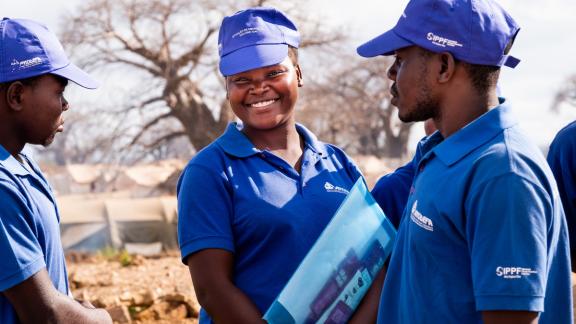
Dr Deborah Bateson is the former Medical Director of Family Planning New South Wales, a member organization of the Family Planning Alliance Australia. She supported the provision of high-quality, evidence-based and equitable cervical screening services across its clinics as well as providing clinical support to its International Program cervical screening training programmes in the Pacific region.
Articles by Dr Deborah Bateson

Australia is on track to eliminate cervical cancer by 2035: Here’s what we’ve learned
Australia is on track to be the first country in the world to eliminate cervical cancer by as early as 2028 to 2035. This can be achieved through a combination of HPV vaccination, screening and treatment of pre-cancers and invasive cancers. I have been privileged during these exciting times to represent Family Planning Alliance Australia (FPAA) on key National Cervical Screening Program committees and to act as the FPAA clinical spokesperson on cervical cancer prevention. As former medical director of one of the FPAA member organisations, Family Planning New South Wales, I have also had the honour of supporting the provision of high-quality, evidence-based and equitable cervical screening services across its clinics as well as providing clinical support to its International Program. The FPNSW International Program has provided cervical screening training and policy support to countries including The Solomon Islands and Tuvalu, and most recently through the collaborative C4 Centre for Research Excellence project Elimination of Cervical Cancer in the Western Pacific (ECCWP) project in Vanuatu and the Western Highlands of Papua New Guinea. Elimination of cervical cancer, which is defined as fewer than 4 cases per 100,000 women, would be a remarkable achievement in Australia and globally. The progress made thus far has been the result of new knowledge about the role of Human papillomavirus (HPV) as a causal factor for almost all cervical cancers, as well as innovations in preventive tools and technologies. In 2020, the Director General of the WHO, Dr Tedros Ghebreysus, announced a Global Strategy to accelerate the elimination of cervical cancer as a public health problem within the next hundred years, setting interim 2030 targets across the three pillars of vaccination, screening and treatment. But continued collaborative local and global efforts are essential to ensure equity both between and within countries by 2030 and beyond. This starts by tackling the underlying inequities and the stigma associated with cervical cancer. Cervical cancer: a disease of inequity HPV is mainly transmitted through unprotected sexual contact. It is very common, and most sexually active people will get some type of HPV in their life, regardless of their gender or sexuality. HPV is the primary cause of cervical cancer, which is the fourth most common cancer among women globally. Despite its prevalence, cervical cancer remains a disease associated with stigma and shame, as people diagnosed with HPV infection and with cervical cancer can be wrongly accused of sexual infidelity or promiscuity, and the symptoms of cervical cancer - such as vaginal bleeding or a malodorous discharge - can be shame-inducing, and can leave women feeling isolated and alone. Cervical cancer is also a disease of inequity both between and within countries. The latest Australian Elimination report shows that the overall incidence rate of cervical cancer is 6.3 per 100,000 women, but is nearly double for Aboriginal and Torres Strait Islander women. In 2020, there were an estimated 604,000 new cases and 342,000 deaths globally, about 90% of which occurred in low- and middle-income countries. And the Western Pacific Region alone bears one quarter of the global cervical cancer burden, according to the WHO.









